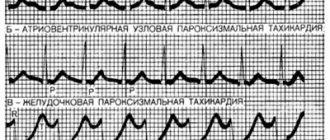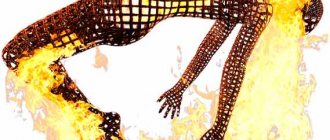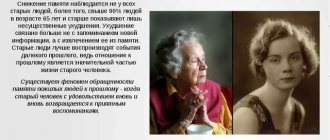Causes of disorientation in space
The described disorder is a change in consciousness that does not allow the individual to think clearly and quickly, in addition, it causes a loss of the ability to recognize people or distinguish places, remember time and memorable dates.
Disorientation often leads to clouding of consciousness and the inability to make independent decisions. There are many reasons that provoke the deviation in question. For example, it can be caused by organic damage to brain structures or metabolic disruptions. In older people, loss of orientation and mental fog are often caused by senile dementia.
In addition, there are diseases accompanied by disorientation.
Incoherence of consciousness can occur due to hypoxemia, observed with pulmonary diseases, with serious infectious processes, malnutrition, due to dehydration.
Incoherence of consciousness also manifests itself due to the influence of a number of external circumstances, such as hypothermia or heat stroke.
Diseases accompanied by disorientation can be identified as Alzheimer's disease, hydrocephalus, spastic pseudosclerosis, tumor formation in the brain and a disorder of its blood supply, dementia, autism, hypoglycemia, depressive states, fatty hepatosis, psychotic disorder of the body, Angelman syndrome, portal hypertension, renal failure , anxiety disorders, schizophrenia, meningitis.
In addition to the listed ailments, excessive consumption of alcohol, drugs, and dehydration can cause a feeling of personal disorientation.
Social disorientation can occur as a result of a sudden change in life. In children, loss of social orientation is the norm, since the little ones are not yet able to recognize their occupation or their own gender. It is difficult for them to navigate among new faces.
Only at the puberty stage does the time of absolute social orientation come.
Symptoms of spatial disorientation
The following types of personal disorientation are distinguished: radiation, spatial, professional and social disorientation.
Psychology offers the following classification of orientation disorders:
– autopsychic (which is a false recognition of oneself as a person or an absolute loss of self-identification);
– allopsychic (loss of orientation in the environment);
– double (the patient simultaneously or alternately resides in reality and imaginary reality);
– mixed or total disorientation.
A doctor can determine the state of disorientation only after conducting an examination.
Common clinical signs include symptoms such as sudden mood changes, dizziness, dream disturbance, and memory impairment.
Disorientation in space is often observed along with an inability to determine time. In addition, the disease in question may be accompanied by such manifestations as the subject’s inability to recognize himself as an individual, name the month, current year, country of residence or place of residence, and passport details.
A feeling of fear and anxiety also arises without an obvious reason. Apathy can suddenly give way to an attack of aggression. Therefore, it should be taken into account that the described state of the subject is often unsafe both for the person suffering from disorientation and for those around him. That is why, if the listed signs occur, a person should be immediately transported to a medical facility.
Social disorientation, as a rule, is not characterized by the presence of pronounced manifestations of a mental disorder. However, the following specific symptoms may occur. So, for example, the subject cannot tell his exact age. He also does not know his own social identity. In an unfamiliar environment, a feeling of uneasiness arises.
In the presence of VSD, spatiotemporal disorientation may be accompanied by: dizziness, ringing in the ears, nausea, partial hearing loss, headaches, and fluctuations in blood pressure. This condition poses a threat to the life of the individual. Self-medication or ignoring the described symptoms can lead to serious consequences and can also be fatal, since pressure surges can cause a stroke or provoke a heart attack.
Disorientation in space is a frequent accompaniment of twilight clouding of consciousness. Characterized by a sudden appearance and an equally sudden disappearance. The subject retains the ability to reproduce mechanical actions.
Disorientation
Disorientation is an altered mental state. A person who is disoriented may not know who they are or where they are, or may not know the time or date.
This is often accompanied by other symptoms such as:
confusion or inability to think with a normal level of clarity
- delirium or delirium
- delusion or belief in something that is false
- agitation or feelings of aggression and restlessness
- hallucinations, or seeing or hearing something that is not there
- wandering
Treatment
Before prescribing therapy, it is necessary to undergo a full examination. Therefore, first of all, you should visit a neurologist who will examine the individual, get acquainted with the complaints, find out the anamnesis and history of the disease.
In order to diagnose the presence of the described disorder, a biochemical blood test, an analysis to determine alcohol-containing substances or identify narcotic substances in the body, computed tomography, various psychotherapeutic tests, electrocardiographic studies, and determination of metabolic failures can be carried out.
Basic therapeutic tactics are determined by the diagnosis, since the methods of treating disorientation are directly determined by the etiological factor. If a sudden feeling of loss of orientation appears, it is recommended to try to relax, streamline the flow of your own thoughts, sometimes you even need to write them down. It is necessary to become aware of the perceived manifestations and understand what gave rise to this state.
So, for example, a decreased concentration of sugar can provoke disorientation if the last meal was taken several hours ago. To correct the situation, you should have a snack or drink a drink containing caffeine. If the described disorder is caused by dehydration of the body, it is necessary to drink water accordingly or drink a liquid containing electrolytes.
In general, the therapeutic strategy contains the following measures: ensuring peace, proper care, eliminating the effects of stressors, excessive emotional stress.
Drug therapy is based on the prescription of such categories of drugs as antipsychotics, tranquilizers, antidepressants, vitamins, sedatives, hypnotics, and mineral complexes. The selection of the required dose, duration and regimen of administration is determined by the doctor. Unauthorized prescription and use of pharmacopoeial drugs is not permitted.
Among the preventive measures, the following are distinguished:
– restriction in the consumption of alcoholic beverages;
– balancing the balance of healthy sleep and periods of wakefulness;
– balancing the diet, the foods consumed must contain the required concentration of minerals, vitamins, fiber, while foods containing “bad” cholesterol should be avoided;
– maintaining control over sugar levels in the presence of diabetes;
– getting rid of tobacco smoking.
In addition to the methods listed above, it is also important to devote time to mental exercise every day. The brain, as well as other organs, also needs training to maintain its performance. Memorizing poems is considered a useful exercise. Daily walks also help to normalize the condition and minimize the occurrence of mental fog with manifestations of disorientation.
Be healthy!
Disorientation is a psychoneurological disorder that is characterized by the inability to navigate in space and impaired recognition of familiar terrain. It is manifested by the inability to use landmarks, determine direction, recognize one’s position in space, draw up a route, and use geographic maps. Patients wander around large buildings and streets, look confused, ask for help to find the right path. Clinical and neuropsychological methods are used for diagnosis. Treatment is conservative, involves taking medications and corrective training to restore orientation skills.
Disorientation in space has several synonymous names: topographic disorientation, topographic orientation disorder, topographic agnosia, topographagnosia. Spatial orientation is a complex multicomponent function, thanks to which a person can determine his location and trajectory of movement relative to other objects. The state of temporary disorientation is familiar to anyone who has found themselves in an unfamiliar area. Pathological disorientation is most often diagnosed in elderly people with local organic brain lesions and neurodegenerative diseases.
Causes
Loss of the ability to navigate the surrounding space can be caused by temporary pathological factors, such as intoxication or a drop in blood sugar, as well as neurological diseases, mental disorders that occur with psychotic episodes. The duration of disorientation, the ability to ask for help, and the use of compensatory functions (for example, memory) depend on the cause. Spatial disorientation is provoked by the following conditions:
- Focal lesions of the central nervous system. Local damage to brain structures is one of the most common causes of spatial orientation disorders. The symptom is found in traumatic brain injuries, brain tumors, and strokes.
- Neurodegenerative diseases. Violation of topographic orientation is observed in old, elderly people with Alzheimer's disease, Pick's disease, and other neurodegenerative pathologies. The inability to recognize the area and navigate a route occurs with the development of dementia, in a psychotic state.
- Psychotic disorders. Patients with mental illness in a state of psychosis lose the ability to correctly assess themselves and the environment. They find themselves disoriented in space, time, and their own personality.
- Use of drugs, alcohol. The state of alcohol or drug intoxication is often accompanied by a loss of the ability to determine one’s own location. The ability to act purposefully decreases, and planning a route becomes impossible.
- Action of drugs. Disorientation may be a consequence of taking certain medications. As a side effect, it occurs when using antihistamines, muscle relaxants, tranquilizers, psychostimulants, some painkillers, and anti-inflammatory drugs.
Pathogenesis
Successful navigation in space requires sufficient development and preservation of cognitive activity, including perception, recognition of spatial landmarks, discrimination between the left and right sides of the body, mental representation of space, and spatial memory. Visual information is processed in the primary projection zones of the occipital cortex, then goes to the posterior convexital parietal regions, the lateral surface of the temporal lobe, which ensures the recognition of objects and determination of their location.
The prefrontal cortex is responsible for short-term spatial memory and regulatory functions that implement human movement in space. Thus, the pathogenesis of disorientation is based on a violation of the cognitive component, a pathological change in the activity of brain structures that provide visual-spatial gnosis, mental representation of space, and topographic memory.
Symptoms
Based on clinical manifestations, four types of spatial orientation disorders are conventionally distinguished. They are represented by landmark agnosia, egocentric disorientation, directional disorientation, and anterograde disorientation. With landmark agnosia, the patient does not recognize surrounding objects that would help him understand his location. The ability to describe a route and draw topographic maps remains intact. The ability to recognize previously seen objects and to impart the properties of landmarks to new ones is lost.
The key symptom of the egocentric type of disorientation is the loss of the ability to imagine the location of objects relative to one’s own body. Patients recognize and name objects, but experience problems when it is necessary to describe the space around them. They do not determine what is on the left, right, behind, and find it difficult to estimate the distance to objects. The skill of mentally imagining changes in the properties of objects when approaching or moving away is lost. It turns out to be impossible to describe the usual path and remember new routes using an egocentric coordinate system.
Disorientation in directions is manifested by the inability to determine and remember the direction of the path to the goal, to the final or intermediate point. Patients retain recognition of landmarks. The loss of the sense of direction is probably caused by a violation of the perception of spatial relationships in the external coordinate system. Patients actively use visible landmarks, correctly assess their position in relation to their body, but have no idea where the destination is if it is out of sight. Therefore, they do not understand where to move to achieve their goal.
People with anterograde topographic disorientation do not remember the surrounding area or routes in new places, but can find paths mastered before the development of the disease and draw maps of familiar space. This disorientation is based on anterograde amnesia, a memory disorder. It is impossible to capture, save and reproduce images of objects that serve as landmarks. With a broader syndrome - topographic amnesia - the skill of memorizing a new route and the ability to find previously known paths are impaired.
Complications
Disorientation significantly limits the physical and social activity of patients. In the absence of treatment and rehabilitation measures, confusion gradually increases, the inability to make decisions and act independently. Patients become restless, irritable, and experience a feeling of helplessness and dependence on others. The most common complications are anxiety and depressive disorders, behavioral deviations in the form of apathy and passivity, and attacks of aggression.
Diagnostics
The examination is performed by a psychiatrist or neurologist. Identifying disorientation and establishing its causes is important for objectifying the severity of functional limitations of activity in brain pathologies, determining the nature of confusion in psychotic states, alcohol or drug intoxication. Such an analysis of the symptoms of disorientation is necessary for the differential diagnosis of focal organic pathologies and neurodegenerative diseases, psychoses of various etiologies. The main research methods are:
- Clinical survey. At the first diagnostic stage, the doctor clarifies the symptoms, specifies their severity, duration, the presence of neurological diseases, mental disorders in the patient and his relatives. When disorientated, patients report that they cannot independently get to their usual places (hospital, store), and are unable to find their way back to home. They do not use landmarks and do not know how to use routes.
- Neurological examination. The clinical and neurological status of the patient is assessed, the presence of focal and cerebral symptoms is determined. Neurological tests reveal the ability to determine the left and right sides, the position of objects, and one’s body in space. Patients with disorientation perform tasks with errors and answer questions after a pause.
- Neuropsychological examination. The use of special tests makes it possible to analyze the structure of the deficit that forms the basis of disorientation. Topographic memory, perception of spatial relationships between objects, and preservation of the egocentric representation of space are studied. The type of disorientation and its severity are determined by the nature and frequency of errors.
Treatment
Basic therapeutic tactics are determined by the main confirmed diagnosis. Etiological treatment methods are varied and may include surgical interventions, for example, for a brain tumor, drug therapy with antipsychotic drugs, and diet therapy. If you suddenly lose orientation in space, you need to calm down and use breathing and relaxation techniques. In some cases, it is enough to restore the usual level of blood sugar, replenish the amount of fluid in the body, and normalize body temperature.
Conservative treatment
General therapeutic measures for the first manifestations of disorientation include ensuring peace, eliminating the effects of stress factors, emotional and mental stress. Patients are advised to have a nutritious diet, maintain a fluid regime, and avoid drinking alcohol, drugs, and medications that can cause disorientation (cancellation must be approved by the attending physician). After seeking medical help and establishing a diagnosis, treatment is carried out using conservative methods:
- Corrective classes. Restorative treatment strategies are aimed at optimizing reduced cognitive functions and practical skills. Classes consist of various exercises that train the ability to navigate, create a route, and find a way to a given point. The “reverse sequence” technique is used with gradual sequential development of the path, memory training exercises, and the ability to direct attention to landmarks.
- Compensation methods. Compensatory strategies involve teaching the patient how to use new ways of thinking and behaving to circumvent existing cognitive deficits. Visual-spatial cues, sound and light signals are actively used to report errors. For example, patients with directional disorientation are taught to make maximum use of the ability to navigate according to the egocentric coordinate system.
- Drug therapy. The most common medications for eliminating the symptom of disorientation are nootropics. They stimulate the activity of higher mental functions and enhance the effect of training and rehabilitation activities. In the presence of emotional and behavioral disorders, antipsychotics, tranquilizers, antidepressants, and drugs with a sedative and hypnotic effect are additionally prescribed.
Experimental treatment
Currently, experimental methods of therapy using virtual reality technologies are beginning to be introduced into practice. They simulate the terrain, allowing for controlled correction of landmark agnosia, egocentric disorientation and directional disorientation. Training in the virtual world is more time-efficient than traditional training. Their implementation is possible in case of movement disorders, since the degree of active physical participation of the patient may vary.
Prognosis and prevention
Disorientation is completely removable if it was provoked by temporary negative factors, acute psychotic states or intoxication. For neurological diseases, the prognosis is determined individually; in most cases, the earlier treatment is started, the more effectively the impaired functions are restored and compensated. Preventive measures include limiting alcohol consumption, a balanced diet, and proper treatment of existing diseases (infections, diabetes).
Topographic cretinism - a disease or a harmless oddity?
Topographic cretinism - the inability to navigate the terrain - still remains a mystery that has yet to be studied. Doctors stubbornly refuse to recognize it as a disease and advise treating it with a bit of humor. Neurophysiologists are of the opinion that this is nothing more than a disruption of the functioning of a certain part of the brain.
Experts have formed a definition from which it follows that topographic cretinism is an absolute inability to navigate the terrain, sometimes accompanied by a fear of getting lost. It most often affects women, as well as a small percentage of men.
Thanks to research, it was possible to find out that this feature was inherent in people at all times. Vivid examples of this are Columbus, who accidentally discovered America, and Kutuzov and Napoleon, who incorrectly drew up their maps of the battle area.
In the modern world, people suffering from such a feature as topographic cretinism have a hard time. Huge cities with branched streets, complex road junctions and architecturally identical houses make life difficult for them. Unfortunately, there are no courses or trainings that can give these people knowledge and practical navigation skills.
Scientific experiments have shown that people discover this trait in themselves in their youth. Before this, their inability to navigate the terrain is attributed to childhood. Why are people born with such unusual spatial perception as topographic cretinism, the symptoms of which are milder in some and stronger in others? In other words, some find it difficult to navigate only in unfamiliar places, while others spend months remembering the route from home to work.
There are several reasons behind topographic cretinism.
The reason is gender specific, i.e. gender It is believed that the difference in the spatial perception of men and women was laid down by ancient people. Male hunters traveled long distances from home and developed the habit of memorizing the area. Women, guardians of the hearth, spent time at home and went far from it only when accompanied by a man.
The reason is genetic. This means that if a mother has topographic cretinism, then most likely at least one of her children will inherit it.
Stress experienced in childhood. Psychotherapists believe that children who get lost or lost on the street remember the sad event forever.
Sometimes the reason is a simple lack of desire to reach the goal on your own. When testing with couples, many women immediately transferred the initiative to the man, following him, even if he made a mistake.
Neuroscientists say that poorly developed spatial perception can be overcome. But this requires patience and the development of some skills.
Ability to draw, especially three-dimensional objects. The ability to visually fix all objects in front of the eyes. Walking down the street, try to remember as many objects as possible along the way. Try not to use modern GPS tools, but find your way yourself. Study a map of the area, redraw a short section from memory, and then walk through it.
Lessons with children in drawing and reading maps of the area bring good results. These children, as adults, do not experience problems with orientation, and topographic cretinism does not threaten them.
What is topographic cretinism and how to deal with it
We hear the phrase “topographic cretinism” quite often. This is the name given to poor ability to navigate, a tendency to get lost even in simple terrain. A high level of education and general erudition do not at all guarantee the ability to find your way to the office.
Of course, there is no official diagnosis of “topographic cretinism”. In the international classification of diseases, inability to navigate is not even identified as a disease. There are a number of conditions accompanied by the inability to remember a route or recognize landmarks along it. These include various types of amnesia and agnosia. These are serious diseases that significantly reduce the quality of life. For example, a person with orientation agnosia, even if he can find the nearest store, will not be able to return home because he does not remember what his house looks like. Of course, those people who complain about topographic cretinism are not sick with anything like that.
The ability to navigate an unfamiliar city, find shortcuts, or remember the location of important objects depends on the brain's ability to form a map of the world around us. This volumetric-spatial representation of reality is called a cognitive map. It includes all subjectively important landmarks and the relationships between them - which is closer, which is further, and by how much. Important qualities of the objects themselves are also recorded - height, width, distance from roads, access routes, distances. Such a map is gradually formed in the process of life thanks to the repeated repetition of the same route. Only for some it is formed in a day, while for others even after six months they cannot remember the location of the nearest store. The features of such individual terrain maps are being actively studied by doctors and psychologists.
“The 2014 Nobel Prize in Medicine was awarded for research into the ability to navigate in space. A group of scientists from Norway and the USA have established the localization of neurons responsible for memorizing terrain and the probable mechanism of this memorization. These studies will eventually help restore the ability to navigate in people with Alzheimer's disease and other severe cognitive impairments."
Pity is not pity, but regret
Pity is vicious by nature. It provokes laziness. I feel sorry for the beggar, but I will never give him a coin. Because this adult, able-bodied person made a choice - he begs and drinks instead of at least sweeping the yard or washing cars. He spends the entire day scurrying between cars at a busy intersection, not doing any good to the world but creating a problem. I have no pity for him and will not invest in his laziness. I only feel regret that such people do not see other ways of existence.
It’s a pity for the government, which, no matter how you look at it, will not yet be able to change its mutilated values and guidelines. The government's actions are aimed at preventing society from falling into final chaos. This is the only thing they really have control over, but it is a lot. Even if democracy is a profanation, which is now fashionable to discuss, then a disoriented society of soap bubbles can only be kept from chaos by other soap bubbles, behind which a totalitarian regime is hidden.
This applies not only to our country. This is true all over the world. Soap bubbles in the economy are cured by other soap bubbles, soap bubbles in culture, in education, in every day of every person. Don't you really want to change something for the better? I want to, but how? Revolutionary ideas are another soap bubble. Well, there will be a different flag, well, a different portrait in the director’s office, well, a different anthem. With foolish ideas about conscience and honor, expressing which in a non-poetic form is a sign of madness... Don’t stir up soap bubbles without having an idea of how to really change something... Chaos is worse.
Male and female perception of the area
Numerous studies have convincingly proven that in most cases men remember the road and navigate the terrain more easily. Both experimental models in the laboratory (labyrinths, diagrams, three-dimensional computer graphics) and the ability to navigate in real conditions were studied. Moreover, if opposite-sex couples participated in the study, the women often voluntarily transferred the initiative to the man.
Of course, there are many differences in the perception of space between men and women. It is they who determine different abilities for orientation. The male “inner map” is voluminous, visual and well scalable. A man can imagine where he is on the map now, rotate it, make it smaller, look from a different angle, and determine the right direction. A man's cognitive map is built based on directions, distances, and street names. The female card is objects. Women are great at remembering landmarks, noticeable buildings and shops. In practice, this is expressed in the fact that if you ask a man for directions, you will receive a set of instructions about “walk 100 meters, turn left, another 200 and at the next intersection turn right.” In the woman’s answer, the same path will sound like “past the big tree, near the grocery store to the left, then to the fur coat boutique and to the right.”
Let's sum it up
Disorientation causes a change in mental state. Some symptoms may also accompany this condition.
Disorientation does not have to be life-threatening. But some illnesses that cause confusion can be serious, so it's important that you seek medical help and get a proper diagnosis.
5 sources
Impulse follows strict sourcing guidelines and relies on peer-reviewed studies, research institutions and medical associations. We avoid using insufficiently expert links. • Berry B. (2014). Minimizing confusion and disorientation: Cognitive support work in informal dementia caregiving. DOI:10.1016/j.jaging.2014.05.001 • Brown G.P. (n.d.). Assessment, intervention and disposition of patients with psychiatric symptoms.jucm.com/assessment-intervention-disposition-patients-psychiatric-symptoms/ • Mayo Clinic Staff. (2018). Delirium.mayoclinic.org/diseases-conditions/delirium/basics/symptoms/con-20033982 • Mental health in emergencies [Factsheet]. (2019).who.int/mediacentre/factsheets/fs383/en/ • When patients suddenly become confused. (2018).health.harvard.edu/staying-healthy/when-patients-suddenly-become-confused
Causes
Many factors influence poor orientation ability, and most of them can be grouped into the following groups:
- Genetic. If your parents were lost in their hometown, then you probably have difficulty finding your way in an unfamiliar area. Moreover, your children will most likely also have difficulty finding their way around. There are no reliable studies on this issue, so it is difficult to say whether the reason for this is really in the genes, or whether upbringing in childhood plays a big role. In any case, it is important to know that regular exercise can correct the situation. It is especially important to teach your child to navigate from childhood if you yourself experience difficulties in this area.
- Gender. As already described above, the “world map” of a woman and a man looks completely different. And due to the fact that women for many centuries and even millennia did not feel the need for orientation, this skill is not as developed as in men.
- Unpleasant situations in childhood. If a person has ever been lost in childhood, fear and panic are very strongly associated with the need to find the way. This reaction becomes subconscious and occurs whenever you need to get your bearings. Additionally, it is strengthened by the fact that negative emotions from early childhood prevent the development of orientation abilities, and a person simply cannot read a map.
- Lack of motivation. If you usually do not experience significant difficulties with orientation, and at some point you realize that you are lost, ask yourself whether you really want to get to your goal. The reason may be more global - for example, you are used to relying on others to determine direction. A psychologist will be better able to help you find the reasons in such a situation.
SD. Episode in the foyer
A large man with a red face from shortness of breath looks around at the mothers waiting for their children from the school. He approaches each one in turn, hanging like a hundred-kilogram cloud of the smells of sweat and dumplings:
- Did you hand over three hundred rubles? - Yes, and you?
“No...”, the girl to my left answers, huddling into a ball. - Why? - the fat man growls menacingly. The girl timidly: “My husband said not to give up.” We don’t know whether we will continue to study here,” she says “my” phrase.
- What are you, Ivanova? - the Parents Committee growls even louder. “No...” Mom justifies herself, not understandingly and almost in a whisper. - I still don’t have that much with me... - How much do I have? Mom opens her wallet, there are 200. The Parents Committee takes them away with a dismissive “Let’s have as much as we have.” The crowd of those who passed 300 squared their shoulders and felt like oligarchs.
The cloud runs towards me: “Did you pass?” I take a breath and, putting on an imperturbable expression on my face, mint out the phrase: “And I’m Ivanova.” The cloud growls; I continue until there is a remark from the other side: “And what kind of racket is this in an educational institution?”
I take out my phone and defiantly press the record button. The cloud immediately departs. I put the phone in my pocket so that no one notices how my hands are actually shaking. Those who passed 300 do not understand the episode, but just in case, they begin to hate me. I remember how my grandfather taught me as a child: “The main thing is not to show the dog fear, then he won’t bite. Treat dogs like cattle.”
He winces at his own snobbery.
Lord, don't let me turn into one of them. I will stand up for myself, but this is just the beginning. The main thing is not to lose yourself. Don't lose your bearings. Don't lose the meaning...
What to do?
Even if you have poor orientation, do not rush to diagnose yourself with “geographical cretinism.” With desire and regular exercise, orienteering skills are easy to acquire. To do this, you can use the following methods:
- The main thing and the main thing is training. In an unfamiliar city, first of all, buy a map and navigate according to it. Go on hikes or short excursions into nature with maps and diagrams of the area. If you know that orienteering is not going well in your family, send your child to an orienteering club. Gradually accustom yourself to walking without a map, having looked at the route in advance.
- While walking, mark landmarks to make it easier to find your way back.
- Take up drawing or music, this will help develop spatial thinking and make it easier to remember routes.
- Remember your childhood. Perhaps you will find moments associated with the fear of getting lost or lost. Discuss this with your parents. Perhaps the help of a psychologist would not be superfluous.
- Train your visual memory. There are many exercises for this. The simplest ones are to look at a landscape or a person for 30-60 seconds and try to describe them in as much detail as possible.
- If you have GPS, take it with you, but don't turn it on. This will give you confidence and you will be able to feel as free as possible, while training your orienteering skills.
- Try to remember the direction you need to go and the direction to the house. Choose a noticeable object near your home - it could be a TV tower or a multi-story building and focus on it if you get lost. Always control the direction to your house or car. Knowing it, you will definitely be able to go to the right place.







